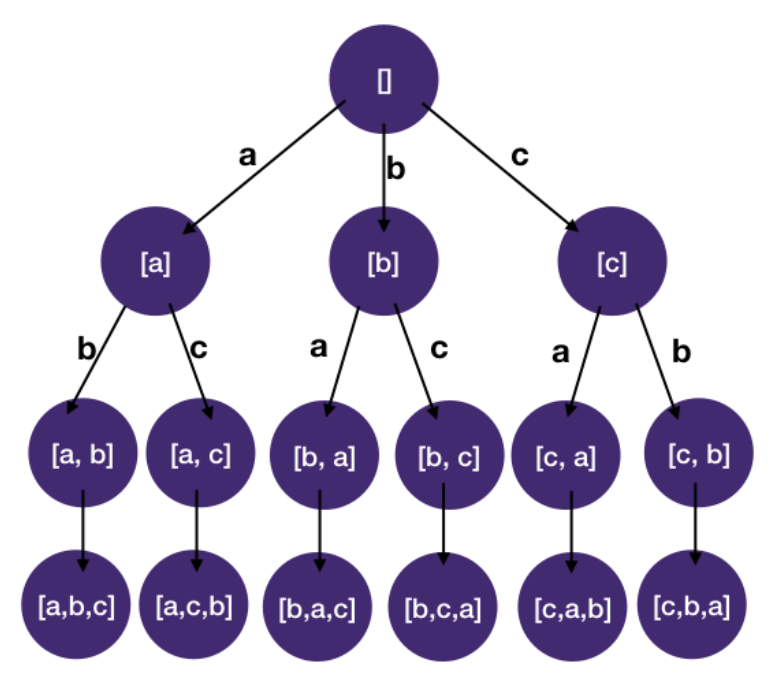Backtracking: Combinatorial Search
Permutations
Given a string of unique letters, find all of its distinct permutations.
Input
letters: a string of unique letters
Output
all of its distinct permutations
Example 1:
Input:
letters = `abc`
Output:
abc
acb
bac
bca
cab
cba
function permutations(letters) {
const result = [];
const n = letters.length;
dfs(letters, [], new Array(n).fill(false), result);
return result;
}
function dfs(letters, path, usedLettersArr, result) {
if (path.length === usedLettersArr.length) {
result.push(path.join(""));
return;
}
for (let i = 0; i < letters.length; i++) {
// skip if letter is already in used
if (usedLettersArr[i]) continue;
path.push(letters[i]);
usedLettersArr[i] = true;
dfs(letters, path, usedLettersArr, result);
path.pop();
usedLettersArr[i] = false;
}
}
Explanation
- Identify States
- What state do we need to know whether we have reached a solution and using it to construct a solution if the problem asks for it
- We need a state to keep track of the list of letters we have chosen for the current permutation
- What state do we need to decide which child nodes should be visited next and which ones should be pruned
- We have to know what are the letters left that we can still use (since each letter can only be used once).
- What state do we need to know whether we have reached a solution and using it to construct a solution if the problem asks for it
- Draw the State-space Tree

- DFS on the State-space tree
- Using the backtracking template as basis, we add the two states we identified in step 1:
- A list to represent permutation constructed so far, path
- A list to record which letters are already used, used, used[i] == true means ith letter in the origin list has been used
- Using the backtracking template as basis, we add the two states we identified in step 1:
- Time Complexity:
O(n!)- This is because we have n letters to choose from then n - 1 and so on therefore n _ (n - 1) _ (n - 2) _ ... _ 1